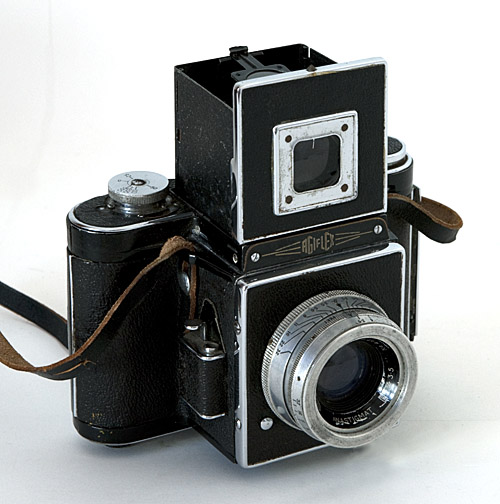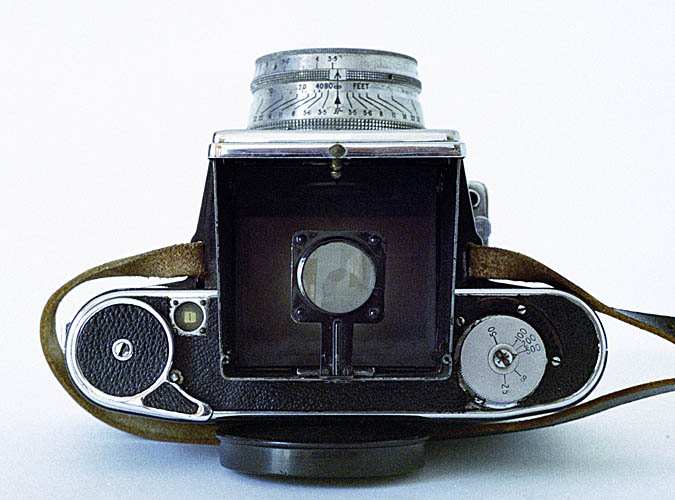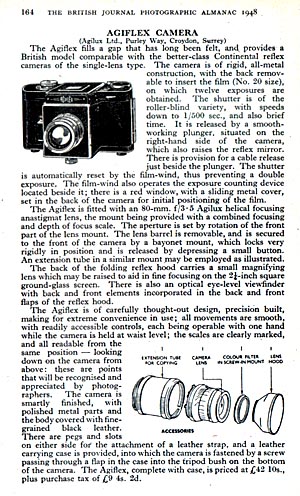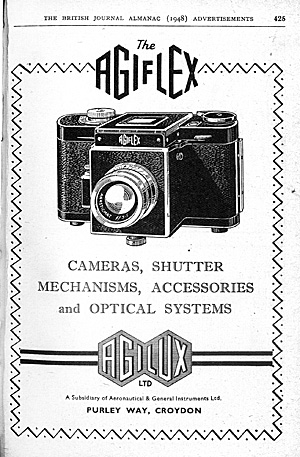by TRA
The History of the Pentacon Six
British copies of the Reflex-Korelle: The Agiflex
Dates: 1946/47-1950 (?)

The Agiflex I of 1948 |
During the Second World War, the British firm Aeronautical
and General Instruments, or AGI, of Croydon had produced for the Air Force
and the Navy reconnaissance cameras based on the German Reflex Korelle
(Shriver, p 86). After the war, reportedly in 1946, they produced
a version of this for the general public: the Agiflex. This turned
out to be cosmetically and even mechanically very similar to the Reflex-Korelle,
but much heavier and much less reliable.
Features This produced 6×6 (2¼" square) SLR, 12 exposures with 120 film. Like the Reflex-Korelle, the Agiflex had a left-hand film-advance lever and a rotating shutter speed dial providing speeds of 1/25 1/50 1/100 1/200 1/500 and B. The mirror was raised by finger pressure and dropped back down when the finger was taken off the lever (thus achieving an “instant-return mirror”!). It had a folding waist-level finder, the sides of which were made of metal. There was a waist-level finder with magnifier and a “sports finder” (direct vision finder). The standard lens was an f/3.5 80mm “Agilux” stopping down to f/32 in a small three-pronged bayonet mount. Flash synchronisation was provided by two contact pins. |

At the time it was not possible to import foreign cameras into England, except in extremely restricted circumstances and only with a special government permit. Thus, in spite of the shortcomings of the Agiflex and its high price, it was successful within the UK. |

Review of the Agiflex I from the British Journal Almanac, 1948 Click on the image to see a larger version. |
To go to the Bibliography, click here.
To go on to the next section, click below.
11 The Agiflex II
To go to the beginning of the history section, click here.
To go to introduction to the cameras, click here.
To choose other options, click below.
Home
© TRA August 2010
